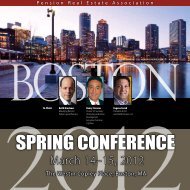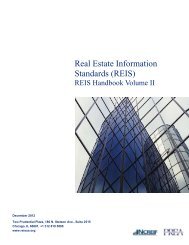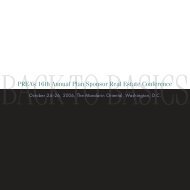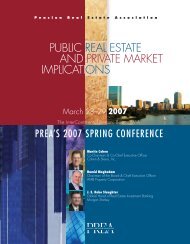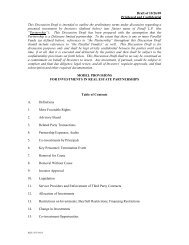Value Beyond Cost Savings - Green Building Finance Consortium
Value Beyond Cost Savings - Green Building Finance Consortium
Value Beyond Cost Savings - Green Building Finance Consortium
- No tags were found...
Create successful ePaper yourself
Turn your PDF publications into a flip-book with our unique Google optimized e-Paper software.
Appendix FSustainable Property Financial Analysis AlternativesAnalysis/Model Description/Commentary Key Links/Examples<strong>Cost</strong> of Capital = Return (expressed as a %), reflecting thecombination of both debt equityBy including a project’s <strong>Cost</strong> of Capital as an expense, EVAallows decision-makers to accept only those projects thatenhance overall shareholder wealth since a positive EVAindicates an excess profit beyond a company’s <strong>Cost</strong> of Capital.The EVA methodology can be used for decisions at thecompany level, the department-level, the store or branch-level,and/or the project level. A number of firms including WholeFoods use EVA for determining incentive compensation.C. Sustainability Sub-Financial Analyses1. Comparative First<strong>Cost</strong> AnalysisFor reasons discussed below, conducing a comparative firstcost analysis should either not be done, or done very carefullyto avoid making bad decisions. Fundamentally, sustainabilityshould not be viewed as something to be added, versus anintegrated part of building design. Most importantly, a first costanalysis that compares initial buildings costs of a sustainablebuilding to a “non-sustainable” building ignores potentialoperating cost savings or any value implications. However,despite the logic that the question does not make a lot ofsense, procurement officers, CFOs, developers, and facilitymanagers are often confronted with short-term budgetconstraints and the anticipated “premium” for sustainablebuilding still gets cited as one of the most important barriers tofurther adoption of sustainable property investment. 103The question of comparative cost is also very difficult toanswer on a general basis. However, it is much more feasibleto address the question of how much sustainability will cost ona specific project. In answering the question for a specificproject, you must specify explicitly the level of green orsustainability goals and consider the role of integrated designin promoting trade-offs that enable reduced costs in someareas to offset increased costs of some sustainable features.Many of the ideas in this appendix and in the book relating tocomparative first cost-analysis emanated from Peter Morris at DavisLangdon. His article in the Pension Real Estate Quarterly provides thebest concise summary we have seen on some of the issues that needto be considered in thinking about this question. “What Does <strong>Green</strong><strong>Cost</strong>”, PREA Quarterly, Summer 2007.http://www.davislangdon.com/upload/images/publications/USA/Morris%20Article.pdfThe best analysis of comparative cost to date is shown in: “The <strong>Cost</strong> of<strong>Green</strong> Revisited: Reexamining the Feasibility and <strong>Cost</strong> Impact ofSustainable Design in the Light of Increased Market Adoption,” LisaMatthiessen, Peter Morris, David Langdon, 2007http://www.davislangdon.com/USA/Research/ResearchFinder/2007-The-<strong>Cost</strong>-of-<strong>Green</strong>-Revisited/The 2007 Davis Langdon report updates a prior report in 2004 andexamined a larger sampling of buildings and additional building types.The report demonstrates that costs for LEED and non-LEED projectsare quite variable, and that LEED certification is not correlated withhigher costs.http://www.davislangdon.com/USA/Research/ResearchFinder/2004-<strong>Cost</strong>ing-<strong>Green</strong>-A-Comprehensive-<strong>Cost</strong>-Database-and-Budgeting-103 Much of the information in this section is derived from conversations with Peter Morris of David Langdon and a review of his article, “What Does <strong>Green</strong> Really <strong>Cost</strong>?”published in the PREA Quarterly in the summer of 2007. This article is available on the <strong>Green</strong> <strong>Building</strong> <strong>Finance</strong> <strong>Consortium</strong> website at [insert web link here].236




